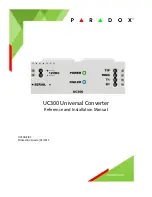
36
Before connecting the inverter to the grid, ensure the grid voltage and frequency comply
with requirements, for which, refer to ""T
Te
ec
ch
hn
niic
ca
all D
Da
atte
e"". Otherwise, contact the electric
power company for help.
A
AC
C C
Ciirrc
cu
uiitt B
Brre
ea
akke
err
An independent two-pole circuit breaker must be installed on the output side of the in-
verter to ensure safe disconnection from the grid. The recommended specifications are
as follows.
IIn
nvve
errtte
err M
Mo
od
de
ell
R
Re
ec
co
om
mm
me
en
nd
de
ed
d S
Sp
pe
ec
ciiffii--
c
ca
attiio
on
n ((b
ba
ac
ckk--u
up
p))
R
Re
ec
co
om
mm
me
en
nd
de
ed
d S
Sp
pe
ec
ciiffii--
c
ca
attiio
on
n ((o
on
n--g
grriid
d))
SH3.0/3.6/4.0/5.0/6.0RS
32 A
≤63 A
•
Determine whether an AC circuit breaker with greater overcurrent capacity is
required based on actual conditions.
•
Multiple inverters cannot share one circuit breaker.
•
Never connect a load between the inverter and the circuit breaker.
R
Re
essiid
du
ua
all C
Cu
urrrre
en
ntt M
Mo
on
niitto
orriin
ng
g D
De
evviic
ce
e
With an integrated universal current-sensitive residual current monitoring unit included,
the inverter will disconnect immediately from the mains power once a fault current with
a value exceeding the limit is detected.
However if an external residual current device (RCD) is mandatory, the switch must be
triggered at a residual current of 300 mA (recommended), or it can be set to other val-
ues according to local regulations. For example in Australia, the inverter can use an ad-
ditional 30 mA (type A) RCD in installations.
6.6.2 Connecting the AC Cable
step 1
Disconnect the AC circuit breaker and secure it against reconnection.
step 2
Unscrew the swivel nut and take out the sealing ring.
User Manual
















































